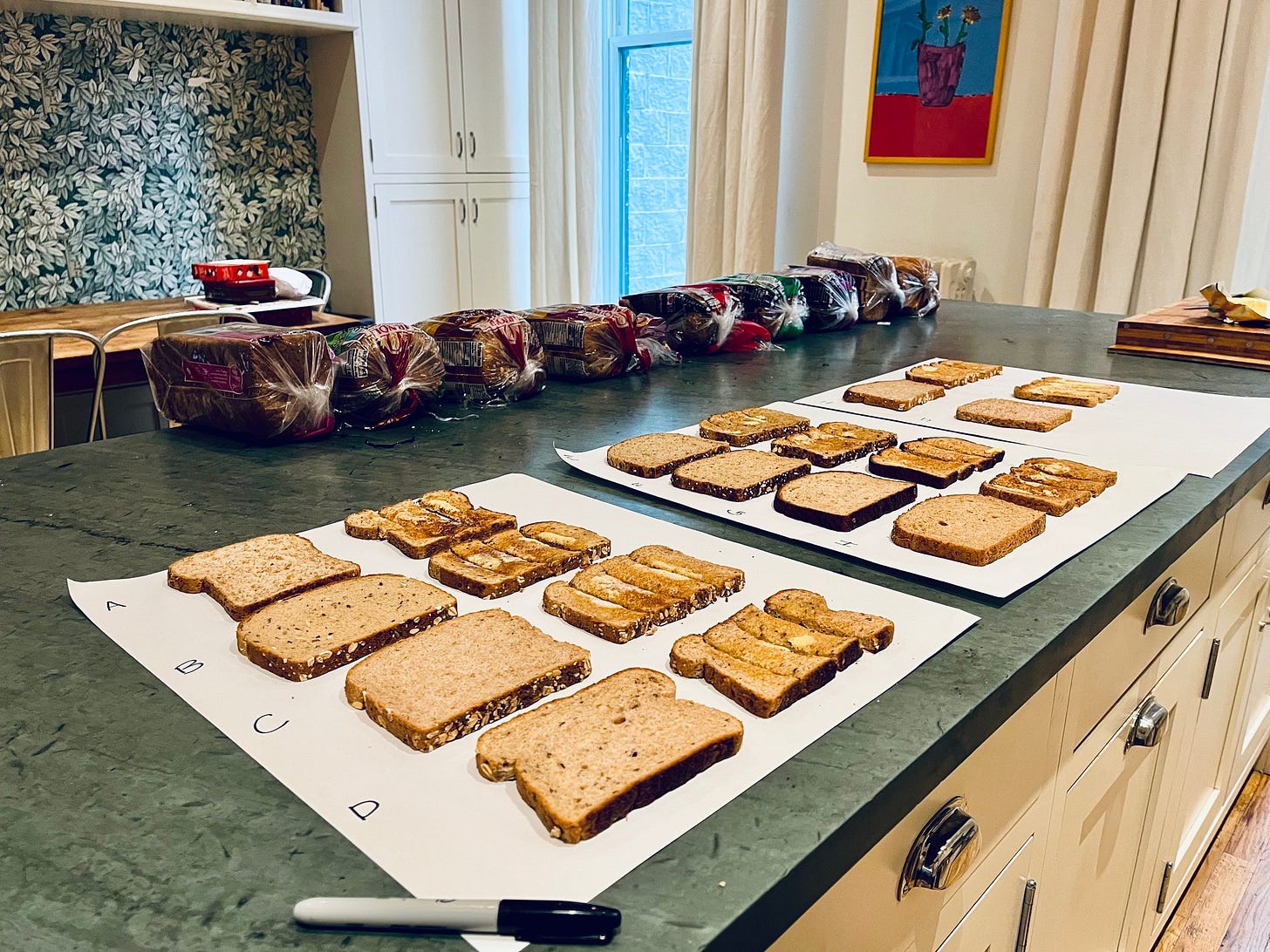Concerns over ultra-processed foods are unavoidable these days, and one oft-cited example of a UPF hiding in plain sight is whole wheat packaged sandwich bread. Though nutritious on its face, it’s a product frequently loaded with an unsavory brew of chemical dough conditioners, emulsifiers, stabilizers, and preservatives. Not exactly what you want in an everyday food.
But sadly, most of us aren’t able to live our lives subsisting exclusively on pristine, additive-free, freshly baked artisan loaves. That’s why Jane and I have spent the past several weeks haunting supermarket bread aisles, comparing ingredient lists and nutrition panels, talking to experts, and taste-testing the competition to find the absolute best whole wheat sandwich bread available at the grocery store. The results may surprise you.
The Hunt
There’s a reason why the expression “the greatest thing since sliced bread” exists, and it’s because up until the 1930s, people either baked their own bread or hoofed it to a bakery daily to buy whole loaves. What a grind! When packaged, sliced bread first hit the market, in 1928, it was a revelation.
Beginning in the 1960s, advancements in industrial baking allowed for supermarket breads that were faster and cheaper to make and could stay on the shelf (or your countertop) for eons without molding or drying out. Today we have bread that’s super convenient, but often full of additives to make it soft, fluffy, and basically immortal.
Our goal was to find breads that were tasty, nutritious, widely available, and free of potentially harmful additives — a tall order. Here’s what we considered in our research:
Whole grain content: Wheat bread is an increasingly popular choice; the consumption of white bread has been falling for decades. But clever marketing can make it hard to distinguish breads that are truly a good source of whole grains from ones that look and sound nutritious, but aren’t. Why are whole grains important? They provide fiber, minerals, vitamins, and other nutrients, and eating them is linked to a reduced risk of many diseases, from diabetes to heart disease to colorectal cancer. Thanks to all the fiber, which most Americans don’t get nearly enough of in our diets, whole grain bread also keeps you full for longer than bread made completely or primarily from white flour.
Sugar content: Sugar is typically used to sweeten the earthy, sometimes slightly bitter flavor of whole grains. Whether it’s cane sugar or molasses or honey or fruit juice, it’s all sugar, and some breads have more of it than you might realize. Dave’s Killer Bread’s Good Seed Bread, for instance, has an entire teaspoon of sugar (5 grams) per slice.
Additives: To help understand the purpose of each additive and its known health impacts, we reviewed scientific literature, consulted CSPI’s food additive safety ratings, and spoke with Aaron Clanton, a bakery industry veteran and baking science instructor at Kansas State University. Ultimately, we eliminated breads for consideration that use chemical emulsifiers, preservatives, stabilizers, or dough conditioners. We were surprised that we did not turn up a single product containing azodicarbonamide (the chemical also found in yoga mats that food activist Vani Hari famously campaigned for Subway to remove from its bread) or potassium bromate — two of the most concerning additives when it comes to bakery products.
Clanton said that companies have phased out these two chemicals due to negative consumer sentiment. He also shed light on an opaque item listed on the ingredient panels of many breads, including ones made by Alvarado Street Bakery and Dave’s Killer Bread: “enzymes.” Large bakery companies are increasingly turning to enzymes — a class of proteins that act as catalysts for chemical reactions — to fill the roles once played by chemical emulsifiers and dough conditioners in industrial baking. The FDA does not require companies to identify which specific enzymes they use, making it hard to comment on potential health impacts.
Certifications: For ecological reasons, and some health ones, too, we believe that organic bread is worth paying for, if you can afford it.
Taste: We looked for breads with a sturdy bite and nutty, malty whole wheat taste — and no funky chemical aftertaste. We tried them blind, straight from the package, as well as toasted with butter.
Price: Bread is no longer the bargain it once was. Over the past two years, the price of wheat bread has risen almost 50 percent. The most expensive loaf of bread in our taste test (which happened to also be our least favorite!) was $101; the least expensive was $5.29. These were New York prices, and exact prices will vary by market.
Availability: There are a lot of breads out there; one brand we looked at, for instance, markets nine types of whole wheat sandwich bread. We considered only breads that with broad national supermarket distribution.
Our Picks
Keep reading with a 7-day free trial
Subscribe to Consumed to keep reading this post and get 7 days of free access to the full post archives.








